Painting Wargaming Collections Part Four: Planning
December 20, 2017 by crew
Big Projects – It’s All In The Planning
Dave Taylor continues his article series on building and painting your armies, explaining his thoughts on the process from beginning to end
Over the decades that I’ve been involved in the hobby, I’ve always derived the most joy from working on and, eventually, completing a big project. Most often that’s been an army, occasionally it has been a huge model (like my Warlord Titan) or a terrain project.
See The Painting Wargaming Collections Article Series By Dave
I’ve spent a lot of time talking with other hobbyists about their big projects too, and I’m always interested in hearing about the kinds of things that inspire them, help them get organized, and keep them motivated through the “dark times” that can befall any lengthy project. In this series of articles on “big projects,” I hope to provide little nuggets of wisdom, gathered during my journeys.
Thus far, we’ve talked about the initial stages of a big project. We’ve discussed Inspiration, Setting Goals, and even your Expectations. The next thing we’ll be diving into is “Planning”. This part of a big project covers so many aspects of each project and it is all about setting yourself up for success.
By no means do you have to write down the answers to each and every question presented here. No one does that each and every time, but there are a lot of “successful” army painters that determine most of their answers most of the time. Some track their progress with a spreadsheet, others use project management software (adapted for use with toy soldiers), and some post all of the inspirational images they’ve found on Pinterest. So, as you read through these questions, feel free to approach your own project in your own way.
Do You Have A Deadline?
Some people work really well with a deadline, while others will always struggle with one. When it comes to working on a big project, it is always a good idea to set yourself a deadline – either a point where you want the entire project (new army or big model, perhaps) completed by or a series of target dates along the way.
This gives you something you can point to as a goal, and can help you with your motivation, but more on that later. I try to set achievable deadlines for all of my major projects (and a few of the smaller ones too), but there are also those times when I feel it’s just fine to not set a deadline, typically when I’m expanding an existing collection, like a few of the Dark Age warbands I’m adding to.
How Are You Going To Purchase The Army?
Depending on the project you are about to embark upon, you might have a pretty big expenditure to deal with. Perhaps you’ve been saving up for it and will buy it all in one go, or you might reward yourself for assembling and painting a unit by buying the next unit on your list. Whichever way you decide to go, make sure it fits with the rest of the parts of your plan, and understand that you might need to adjust your plans as you go along. I find that the typical way I approach a new army project is that I work out an army list full of the models I like the look of.
Usually, it’s a list that is larger than the “standard” game size that people are laying. When my finances are in order, I’ll head to my local store, or jump online, and purchase just over half of the models on the list. As I assemble and paint the army I play a few games (at whatever size I can) and get a better feel for the army. Sometimes this means that I’ll change my future purchases, but usually, it means that I get really excited about the army and run out and buy the rest of the models on my list. I’m working this way with my current Adeptus Mechanicus army project.
How Much Assembly Is There?
Once you’ve painted a lot of models, you start to get a good idea of how long it takes, on average, to paint a single model. I generally budget one hour per 28mm infantry model, although I know that some will take less and others will take more. One thing that people rarely budget time for is assembly.
I’m currently working on a large Legio Custodes commission, with over seventy infantry models. When each of those models averages thirteen parts, and each part averages three connection points with the sprues, you are looking at more than 2,700 snips with your clippers to remove them, and then a lot of trimming work with your hobby knife. It’s not always a big factor in your planning, but give yourself some time when working it all out.
What Colour Scheme(s) Are You Going With?
Have you chosen a colour scheme for the army? There are plenty of ways that you can choose a scheme (or schemes), sometimes your choice of the army might dictate it for you – Ultramarines are going to be mostly blue, a British Napoleonic army is going to be mostly red – but other times you might have complete freedom.
If you do, check out videos on colour theory, look at colour schemes you like from other games/armies, and then paint a few test models. In the photo above you can see a unit from my Knights of Morr Empire army for Warhammer. With an army devoted to the God of Death, I decided on dark iron armour, offset with a rich purple and a tarnished copper. The tonal contrasts were good, and I made sure the bases had a good amount of desaturated yellow in them to contrast well against the purple.
Are You Comfortable With The Techniques You're Using?
Trying out new techniques can take a little bit longer as you work your way through the project. Not that trying new techniques is a bad thing, but I’d suggest that if you are going to try some, that you build some extra hours/days into your timeline. On this Legio Custodes commission, I’m doing a bit more airbrushing on the vehicles that I might usually for my own models.
I recently hit a bit of a snag when I needed to order a new needle for my airbrush, putting a halt to that part of the plan until it arrived. Luckily for me, there was a lot more infantry to assemble.
What Are You Doing With The Bases?
In a big army project, you might find you need to do the basing on forty, fifty, 100+ models. There are lots of different ways you can approach basing your models, lots of different “themes” you can apply – like snow, desert, rusty metal, cobblestones – but when it comes down to it there are two main options: Do-it-yourself (DIY) or pre-textured bases (typically a resin or plastic). It doesn’t matter which way you go, as long as you factor it into your planning.
For the last decade or so, almost all of my armies have been based on pre-textured bases from Secret Weapon Miniatures or Dragon Forge Design. As these bases need to be cast up and shipped by the companies, I place my order as soon as I have a good idea of what will be in the army. In the photo above you can see the Tech-Deck bases I have painted up for my Sicarian Ruststalkers, and some of my Rangers standing on their bare resin bases.
How Often Are You Going To Paint?
When developing your plan, it’s a good idea to have a feel for how often you are going to be able to paint. It’s just fine setting yourself a goal of 12 models a week if you are going to paint each night for a few hours, but not if you are only going to be able to squeeze in an hour two or three nights per week.
If you aren’t able to paint very often, it’s just fine to adjust your plans and push back your deadline. Even though our modern world sets a pretty “on demand” kind of approach on us, the tabletop miniatures wargaming hobby has been around for a long time, and will continue to be around for a lot longer. It’s OK to take a longer-term approach to it all. Just remember to check/adjust your expectations.
Will You Play Throughout The Project?
Personally, I’m fine with not playing a game until the army is finished, but I know a LOT of hobbyists how love to play more than paint. For these people, gaming with the army during the painting process is a really important thing. Planning regular games (perhaps once every other week) is a great idea. It helps get you up and away from the painting table for a break, and if you are building up your game sizes, you can just play with the models you have painted.
This gives you incentive to get your models painted up and ready to rock. It can also help you develop a strong understanding of your army’s rules and work on strategies and tactics for when your army is complete. The photo above was from a practice game I managed to get in while painting up my Skarrd force for the Dark Age tournament at the Michigan GT.
So, there you have it, the core questions to ask yourself when you are planning out your new project.
How would you answer these questions? Do you have some more questions on your own?
"This part of a big project covers so many aspects of each project and it is all about setting yourself up for success..."
Supported by (Turn Off)
Supported by (Turn Off)
"Trying out new techniques can take a little bit longer as you work your way through the project..."
Supported by (Turn Off)































![TerrainFest 2024 Begins! Build Terrain With OnTableTop & Win A £300 Prize! [Extended!]](https://images.beastsofwar.com/2024/10/TerrainFEST-2024-Social-Media-Post-Square-225-127.jpg)









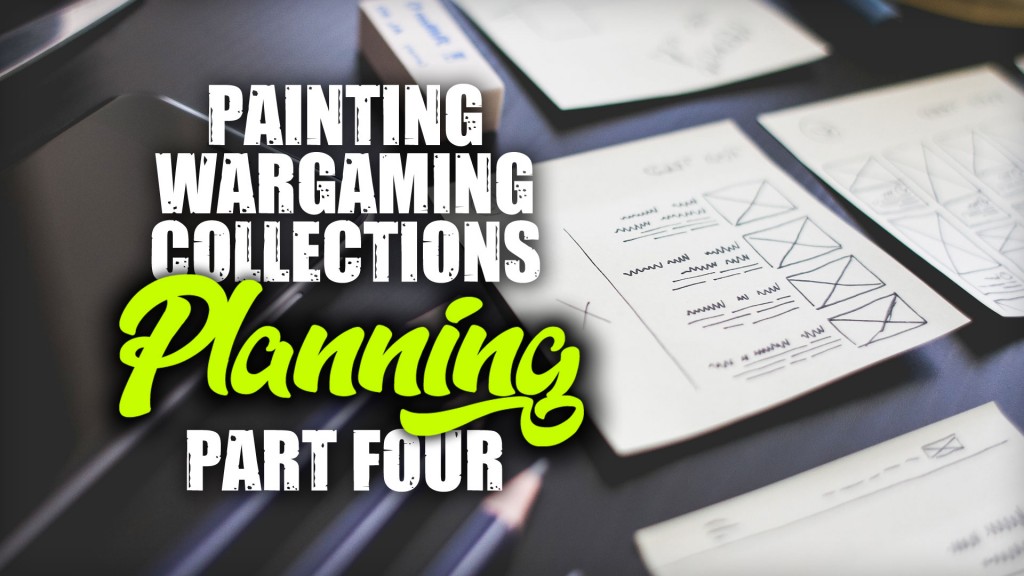
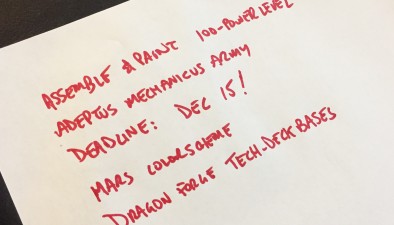
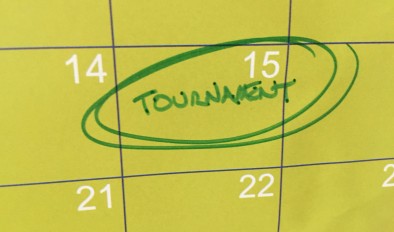
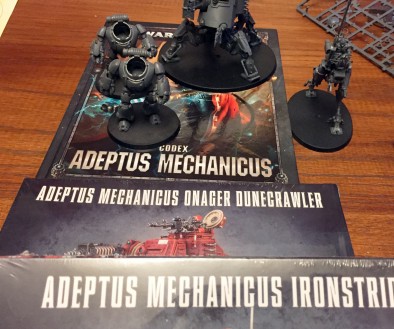
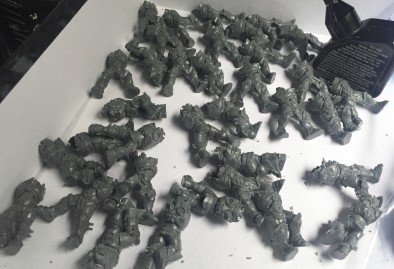
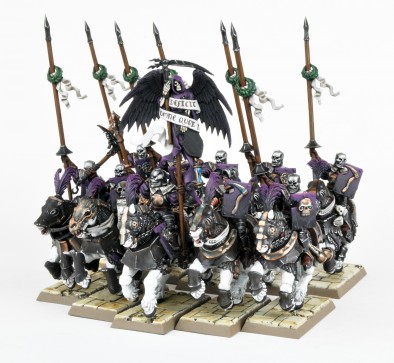
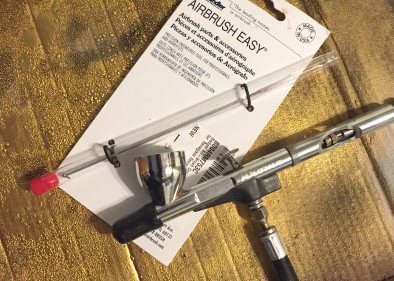
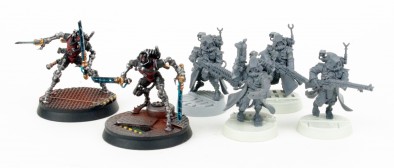

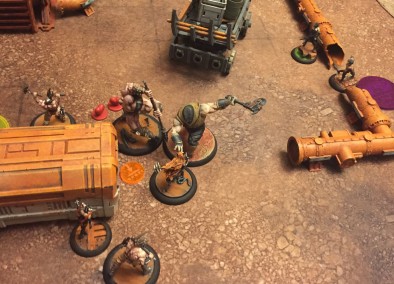
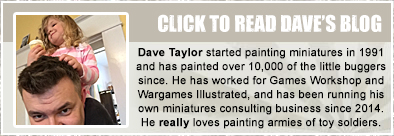


































An excellent series that has made me more realistic on my timelines and… capabilities
Glad you are enjoying the articles : )
the more time you spend time planing the less you have for painting. You want your toys painted, then sit down, and grab your brush and start working. OCD statis is a real thing in this hobby second only to console/computer stasis.
Yep, the idea of “Just do it!” is certainly a thing. I’m a fan of knowing where I’m going when I sit down to paint, but I understand that not everyone is like that.
Just sat down this week and started to build a Mechanicus army. It took quite a while for me to settle on a list but I did have a theme in mind when I began getting the models together. In this case I ordered a large number of starter sets (9) containing more models than I was planning to use and am now recouping funds by selling the excess on Ebay. Overall this will have reduced the costs to a quarter of the retail pricing making the force very affordable and excellent value. A 2000 point army of GW models… Read more »
This is an excellent description of your project. It lays it all out perfectly, with realistic expectations and achievable goals. Success is guaranteed! : )
Cheers Dave
For me kickstarter has been a big problem regarding being able to focus on a project to completion. This article sums it up for me https://therenaissancetroll.blogspot.ca/2017/12/what-is-kickstarter-for.html?m=1 I had 4 kickstarters all get delivered within the past two months. I’m already invested in a couple of painting projects (which is already a problem in itself) with a sizable queue not that far behind. It may be doubtful that I can even get to the kickstarters in 2018. Entirely my own fault? Absolutely. One I’m trying to rectify by sticking to a couple projects through to completion instead of constantly getting distracted.
Too much this!